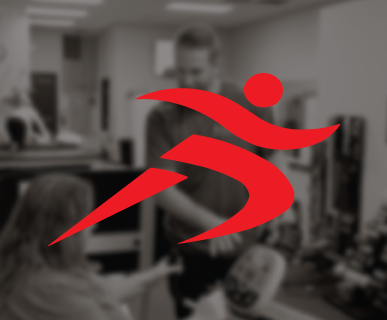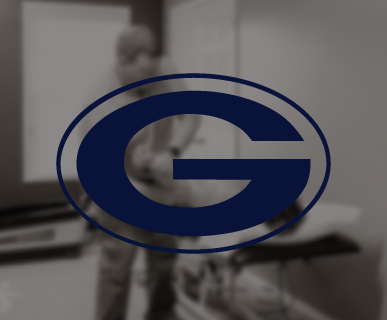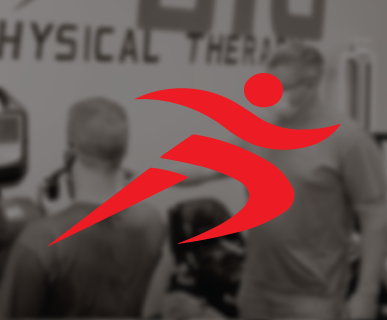During your first visit you can expect the following:
● Arrive at your appointment with your paperwork completed (you can download it
from our website - see the paperwork or forms link).
● You will provide us with your referral for physical therapy if you have one. If you
don't have a referral, let us know when you schedule your first visit with us (note -
a referral is not always needed).
● We will copy your insurance card.
● You will be seen for the initial evaluation by the therapist.
● The therapist will discuss the following:
1. Your medical history.
2. Your current problems/complaints.
3. Pain intensity, what aggravates and eases the problem.
4. How this is impacting your daily activities or your functional limitations.
5. Your goals with physical therapy.
6. Medications, tests, and procedures related to your health.
● The therapist will then perform the objective evaluation which may include some of the following:
1. Palpation - touching around the area of the pain/problem. This is done to check for the presence of tenderness, swelling, soft tissue integrity, tissue temperature, inflammation, etc.
2. Range of Motion (ROM) - the therapist will move the joint(s) to check for the quality of movement and any restrictions.
3. Muscle Testing - the therapist may check for strength and the quality of the muscle contraction. Pain and weakness may be noted. Often the muscle strength is graded. This is also part of a neurological screening.
4. Neurological Screening - the therapist may check to see how the nerves are communicating with the muscles, sensing touch, pain, vibration, or temperature. Reflexes may be assessed as well.
5. Special Tests - the therapist may perform special tests to confirm/rule out the presence of additional problems.
6. Posture Assessment - the positions of joints relative to ideal and each other may be assessed.
The therapist will then formulate a list of problems you are having, and how to treat those problems. A plan is subsequently developed with the patient's input. This includes how many times you should see the therapist per week, how many weeks you will need therapy, home programs, patient education, short-term/long-term goals, and what is expected after discharge from therapy. This plan is created with input from you, your therapist, and your doctor.
In some cases, physical therapy techniques can be painful. For example, recovering knee range of motion after total knee replacement or shoulder range of motion after shoulder surgery may be painful. Your physical therapist will utilize a variety of techniques to help maximize your treatment goals. It is important that you communicate the intensity, frequency, and duration of pain to your therapist. Without this information, it is difficult for the therapist to adjust your treatment plan.
There are dozens of different types of treatment interventions. Here is a list of treatment interventions:
Active Range of Motion (AROM) - the patient lifts or moves a body part through range of motion against gravity. AROM is usually one of the first modalities prescribed for arthritis.
Active Assistive Range of Motion (AAROM) - therapist-assisted active range of motion. This is usually prescribed for gentle stretching or strengthening for a very weak body part.
Stationary Bicycle - with or without resistance. This is usually prescribed for improving the strength and/or range of motion of the back or lower extremities as well as cardiovascular endurance.
Gait or Walking Training - the analysis of walking problems by visually examining the interaction of the low back and the joints of the thighs, legs, and feet during the various stages of walking, including initial contact, loading response, mid stance, terminal stance, pre swing, mid swing, and terminal swing. Many back, thigh, leg, ankle, and foot problems may be caused by or manifest themselves in subtle gait abnormalities.
Isometrics - muscle contraction without joint movement. This is usually prescribed for strengthening without stressing or damaging the joint (e.g., arthritis, or exercises to be performed in a cast, or right after surgery if recommended by the therapist/doctor).
Isotonics - muscle(s) contracting through the ROM with resistance. This is usually
prescribed for strengthening.
Soft Tissue Mobilization - therapeutic massage of body tissue performed with the
hands. Soft tissue mobilization may be used for muscle relaxation, to decrease swelling, to decrease scar tissue adhesions, and for pain relief.
Mobilization - hands-on therapeutic procedures intended to increase soft tissue or joint mobility. Mobilization is usually prescribed to increase mobility, delaying progressive stiffness, and to relieve pain. There are many types of mobilization techniques including Maitland, Kaltenborn, Isometric Mobilizations, etc.
Proprioceptive Neuromuscular Facilitation (PNF) - a system of manually resisted exercises performed in diagonal patterns that mimic functional movements. PNF was initially used in developmentally and neurologically impaired patients but now is used in almost every aspect of neuromuscular retraining from athletes in sports facilities to the very weak in hospitals and nursing homes.
Posture Training - instruction in the correct biomechanical alignment of the body to reduce undue strain on muscles, joints, ligaments, discs, and other soft tissues. There is an ideal posture, but most people do not have an ideal posture. Therapists educate patients about the importance of improving posture with daily activities. Stretching and strengthening exercises may be prescribed to facilitate postural improvement and to prevent further disability and future recurrences of problems.
Progressive Resistive Exercises (PRE) - exercises that gradually increase in resistance (weights) and in repetitions. PRE is usually prescribed for reeducation of muscles and strengthening. Weights, rubber bands, and body weight can be used as resistance.
Passive Range of Motion (PROM) - the patient or therapist moves the body part through a range of motion without the use of the muscles that "actively" move the joint(s).
Stretching/Flexibility Exercise - exercise designed to lengthen muscle(s) or soft tissue. Stretching exercises are usually prescribed to improve the flexibility of muscles that have tightened due to disuse or in compensation to pain, spasm or immobilization.
Cryotherapy or Cold Therapy - used to cause vasoconstriction (the blood vessels constrict or decrease their diameter) to reduce the amount of fluid that leaks out of the capillaries into the tissue spaces (swelling) in response to injury of tissue. Ice or cold is used most frequently in acute injuries, but also an effective pain reliever for even the most chronic pain.
Neuromuscular Electrical Stimulation (NMES) - the application of electrical stimulation to aid in improving strength (e.g., the quadriceps muscle after knee surgery or injury). NMES is also used to decrease pain and swelling and to relieve muscle spasm.
Neck Traction - a gentle longitudinal/axial pull on the neck, either manual or mechanical, intermittent or continuous for relief of neck pain, to decrease muscle spasm and facilitate unloading of the spine.
Heat - heat is recommended to decrease chronic pain, relax muscles, and for pain relief. It should not be used with an acute or "new" injury.
Iontophoresis - medications are propelled through the skin by an electrical charge. This modality works on the physical concept that like charges repel each other, therefore, a positively charged medication will be repelled through the skin to the underlying tissues by the positively charged pad of an iontophoresis machine. Iontophoresis is usually prescribed for injuries such as shoulder or elbow bursitis.
Pelvic Traction - the longitudinal/axial pull on the lumbar spine, either manual or mechanical, intermittent or continuous. Pelvic traction may be helpful for the relief of low back pain and muscle spasm.
Transcutaneous Electrical Nerve Stimulation (TENS) - a relatively low voltage applied over painful areas through small self-adhesive electrodes. The electrical stimulation "disguises" or "overrides" the sensation of pain. It is a small, portable unit, used in intervals, to control pain and reduce dependence on drugs. It is usually prescribed for relief of pain.
Ultrasound - ultrasound uses a high frequency sound wave emitted from the sound head when electricity is passed through a quartz crystal. The sound waves cause the vibration of water molecules deep within tissue causing a heating effect. When the sound waves are pulsed, they cause a vibration of the tissue rather than heating. The stream of sound waves helps with nutrition exchange at the cellular level and healing.
Studies have shown that ultrasound is helpful for ligament healing and clinically, for
carpal tunnel syndrome, and muscle spasm.
Billing for physical therapy services is similar to what happens at your doctor's office. When you are seen for treatment, the following occurs:
1. The physical therapist bills your insurance company, Workers' Comp, or charges
you based on Common Procedure Terminology (CPT) codes.
2. Those codes are transferred to a billing form that is either mailed or electronically
communicated to the payer.
3. The payer processes this information and makes payments according to an
agreed upon fee schedule.
4. An Explanation of Benefits (EOB) is generated and sent to the patient and the
physical therapy clinic with a check for payment and a balance due by the
patient.
5. The patient is expected to make the payment on the balance if any.
6. We bill our patients monthly for what charges the insurance company has
already paid for. You will not be billed until the insurance company pays their
part.
It is important to understand that there are many small steps (beyond the outline provided above) within the process. Exceptions are common to the above example as well. At any time along the way, information may be missing, miscommunicated, or misunderstood. This can delay the payment process. While it is common for the payment process to be completed in 60 days or less, it is not uncommon for the physical therapy clinic to receive payment as long as six months after the treatment date.
SELECT LOCATION
Choose from 3 great locations in the River Valley



